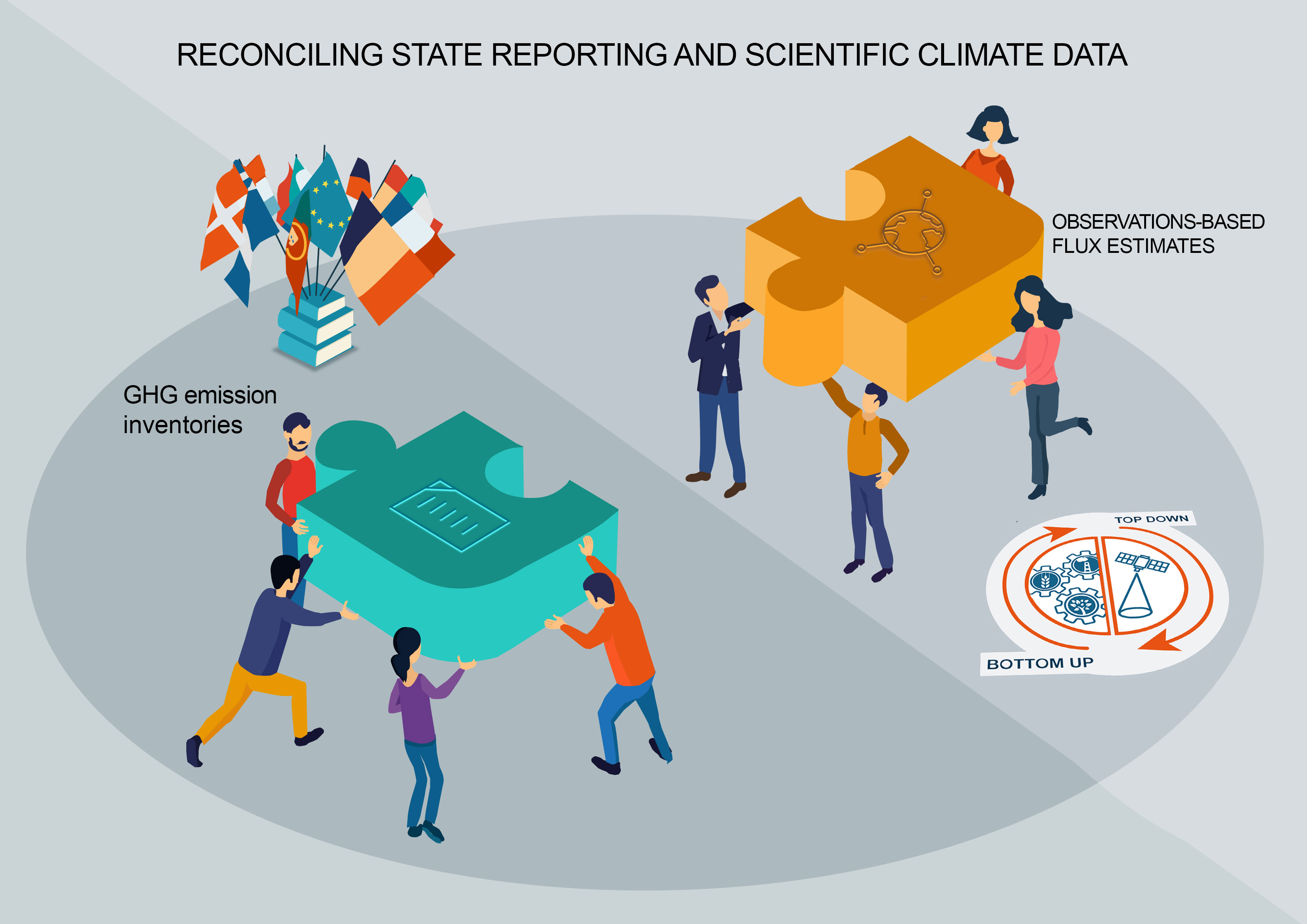Objective
WP5 aims at synthesising observation-based estimates of GHG fluxes from WPs 2 to 4 to deliver synthetic plots in preparation for comparison and potential reconciliation with official country-level UNFCCC emission inventories. This process will identify systematic differences that may require scientifically justified corrections (e.g. harmonise system boundaries).

The main objective of WP5 is to synthesise observation-based estimates of GHG fluxes and carbon stocks from WPs 2 to 4 to deliver Product 3 in preparation for comparison and potential reconciliation with official country-level UNFCCC emission inventories. This process will identify systematic differences that may require scientifically justified corrections (e.g. harmonise system boundaries). The remaining differences may reveal more conceptual issues when comparing inversions to bottom-up emissions mapping and ecosystem models, which limit the extent to which the differences can be resolved in a reconciliation process. These problems have been shown in continental scale carbon budgets (Canadell et al., 2011) to vary considerably between terrestrial regions, also depending on whether land use, fossil fuel emissions or biospheric emissions are the main source. WP5 will perform a thorough uncertainty assessment of GHG budget estimates at national and sub-national scales, identifying both systematic and parametric uncertainties. This process will be systematically improved each year, with feedback to WPs 2, 3 and 4 to provide comprehensive assessments of GHG budgets, with supporting peer-reviewed synthesis publications and the GHG budget fact sheet documents (in collaboration with WP6). An additional novelty will be to analyse recent trends in the GHG budgets, in order to propose future predictions of anthropogenic emissions, facilitating a move towards real-time verification. Analysis of ecosystem carbon-climate feedbacks (how NEE responds to climate anomalies) will be used to better understand the vulnerability of carbon stocks and non-CO2 emissions, with a focus on extreme events (e.g., droughts). This massive synthesis effort will follow a precise well-defined timeline enabling yearly updates, detailed in Figure 6, suited for future operationalization and use by stakeholders and policy makers.
